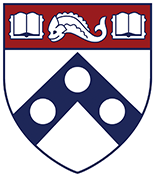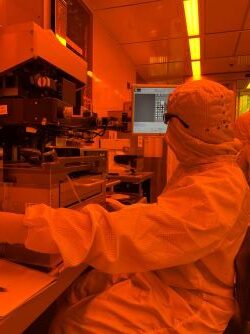Matilda Dingemans’ summer internship at the Singh Center for Nanotechnology transformed her understanding of research.
“I was scared that research was solely about discovering something new,” Dingemans said. Fortunately, Dingemans’ experience with Dr. Marc Miskin’s lab group gave her insight and hands-on experience. There, Dingemans worked under the mentorship of ESE doctoral student Sophia Handley.
“Our goal was to figure out the mechanisms behind the propulsion of AC-driven microrobots colloquially termed ‘rave bots,’” Dingemans explained. “AC propulsion mechanisms are expected to perform better in higher conductivity solutions over existing DC mechanisms.”
To accomplish the above, Dingemans worked with Handley “on understanding what was believed to be the physical principle propelling the robots: AC electroosmosis. We discovered a significant discrepancy between theoretical models and experimental outcomes,” Dingemans explained. “This led us to explore Alternating Current Reversal Electroosmosis Flow (AREF), a newly discovered phenomenon that, while not fully understood, showed promising alignment with our data. By compiling and analyzing extensive data, we developed models that better reflect these complex flow behaviors, ultimately enhancing our understanding and control of fluid dynamics in microrobots.”
Observing the fabrication process in the Singh Center’s clean room contributed to Dingemans’ experience. So did the relationships forged with other members of the Miskin Lab. “The relationships I built with Professor Miskin and my lab group will continue into this semester,” Dingemann’s said. “My favorite part of the experience was delving into a completely new sector of engineering and gaining a deeper understanding of the research process. In Professor Miskin’s class that I took in the spring, we mostly discussed macroscale electrical engineering, so it was fascinating to explore nanoscale work and see how it intersects with the broader principles I was already familiar with.”
The summer internship proved one of new discoveries after all. It deepened Dingemans’ understanding of “existing physical principles, developing models, and testing their dependencies. It’s about applying known concepts to new data and exploring how they can be adapted to different situations and settings.”

